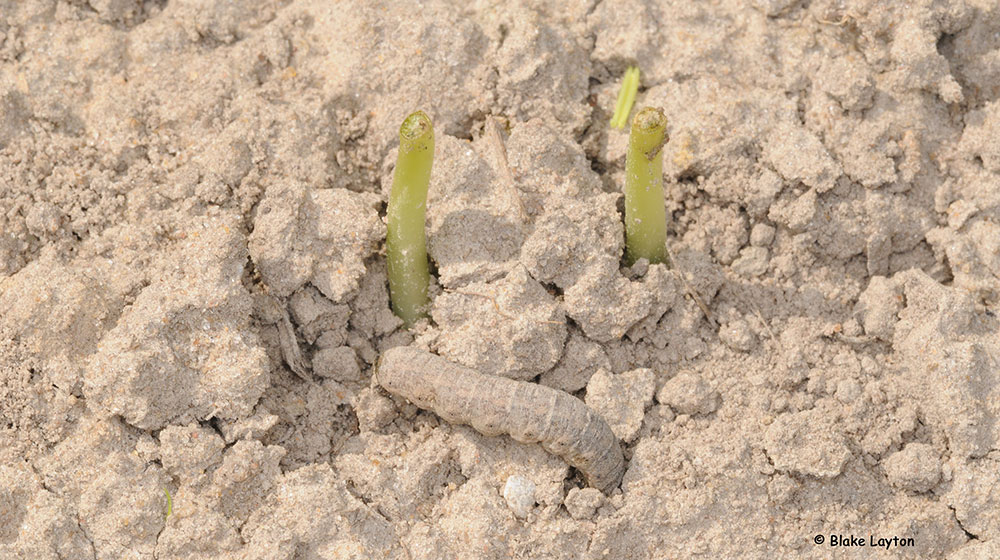Granulate Cutworm, Vol. 2, No. 6

Feltia subterranea
Order: Lepidoptera
Family: Noctuidae
You set out eight tomato plants yesterday but only five are left this morning. Well, five plants and three little stumps. What did this? There are no deer or rabbit tracks. Cutworms; their name explains the damage they cause. During the day, these caterpillars remain hidden just beneath the soil. At night, they emerge to feed by cutting small plants off just above the soil line and either consuming the plant then or dragging it back beneath the soil to eat later. If you use a pocket knife to dig in the top inch or so of soil around those cut plants you may unearth the caterpillar that did the damage. In addition to damaging transplants, cutworms will also destroy emerging seedlings of plants like peas, beans, and okra. How can the caterpillars already be this big this early in the year? Some species overwinter as partly grown larvae. Other species begin growing on winter weeds in late winter/early spring. Once you till up the weeds to get ready to plant, they don’t have anything left to eat—except your transplants or emerging seedlings.
Control: The easiest way to protect young transplants from cutworms is to spray a six to eight inch band of soil around each plant with an insecticide that contains bifenthrin or permethrin immediately after you have set the plants out and watered them. These pyrethroid insecticides are highly effective against cutworms. Organic gardeners can protect plants by placing “cutworm collars” or “cutworm fences,” made from wax paper or aluminum foil, around each plant when transplanting so that the collar extends about an inch into the soil and a couple of inches above the soil line.
See page 9 of Extension Publication 2347, Insect Pests of the Home Vegetable Garden for more information on cutworms and a list of recommended insecticides.
Let others know about the Bug’s Eye View Newsletter: If you know someone who might enjoy receiving the Bug’s Eye View Newsletter, please share. They can easily subscribe by clicking on the sign up link shown below.
Blake Layton, Extension Entomology Specialist, Mississippi State University Extension Service.
The information given here is for educational purposes only. Always read and follow current label directions. Specific commercial products are mentioned as examples only and reference to specific products or trade names is made with the understanding that no discrimination is intended to other products that may also be suitable and appropriately labeled.

